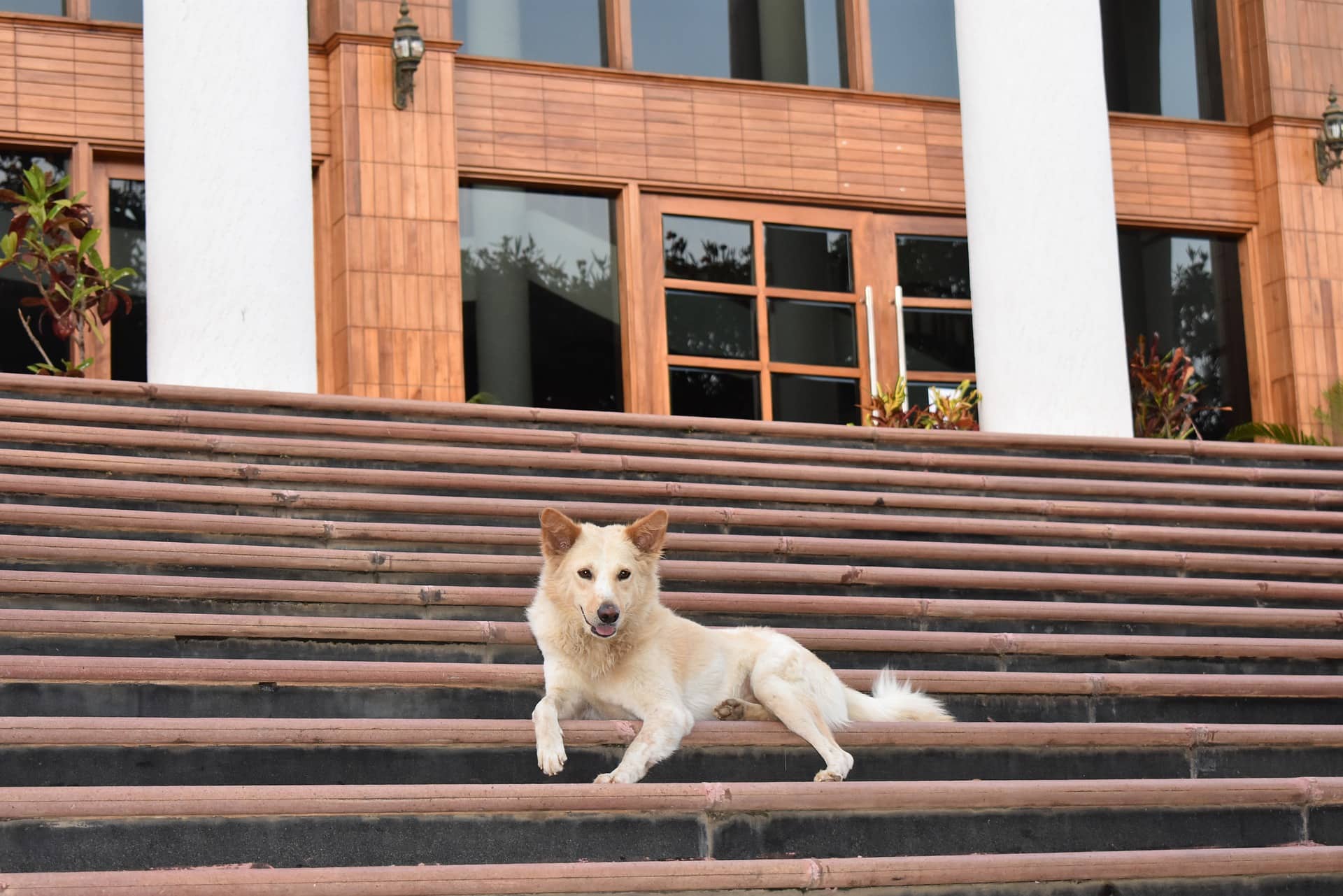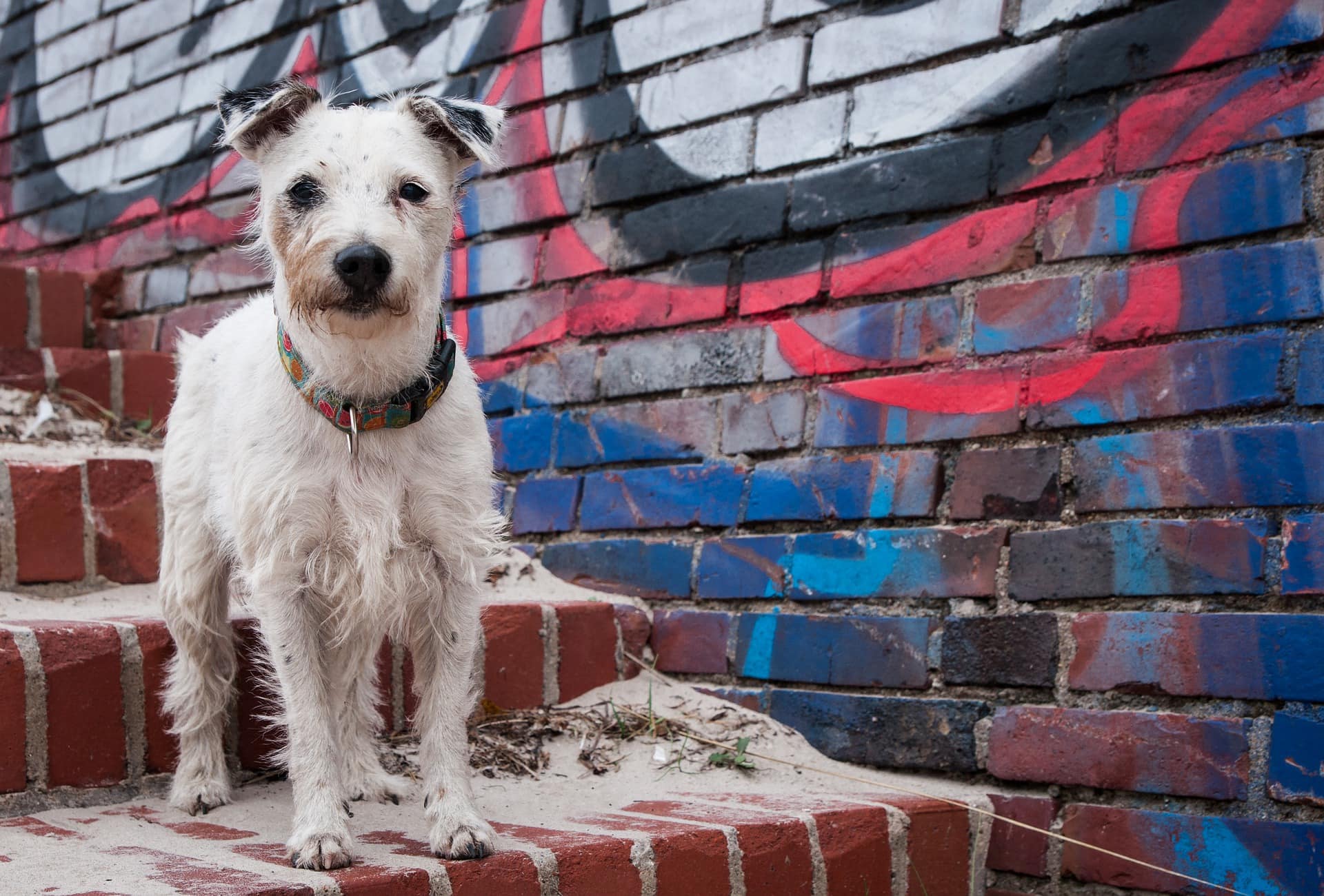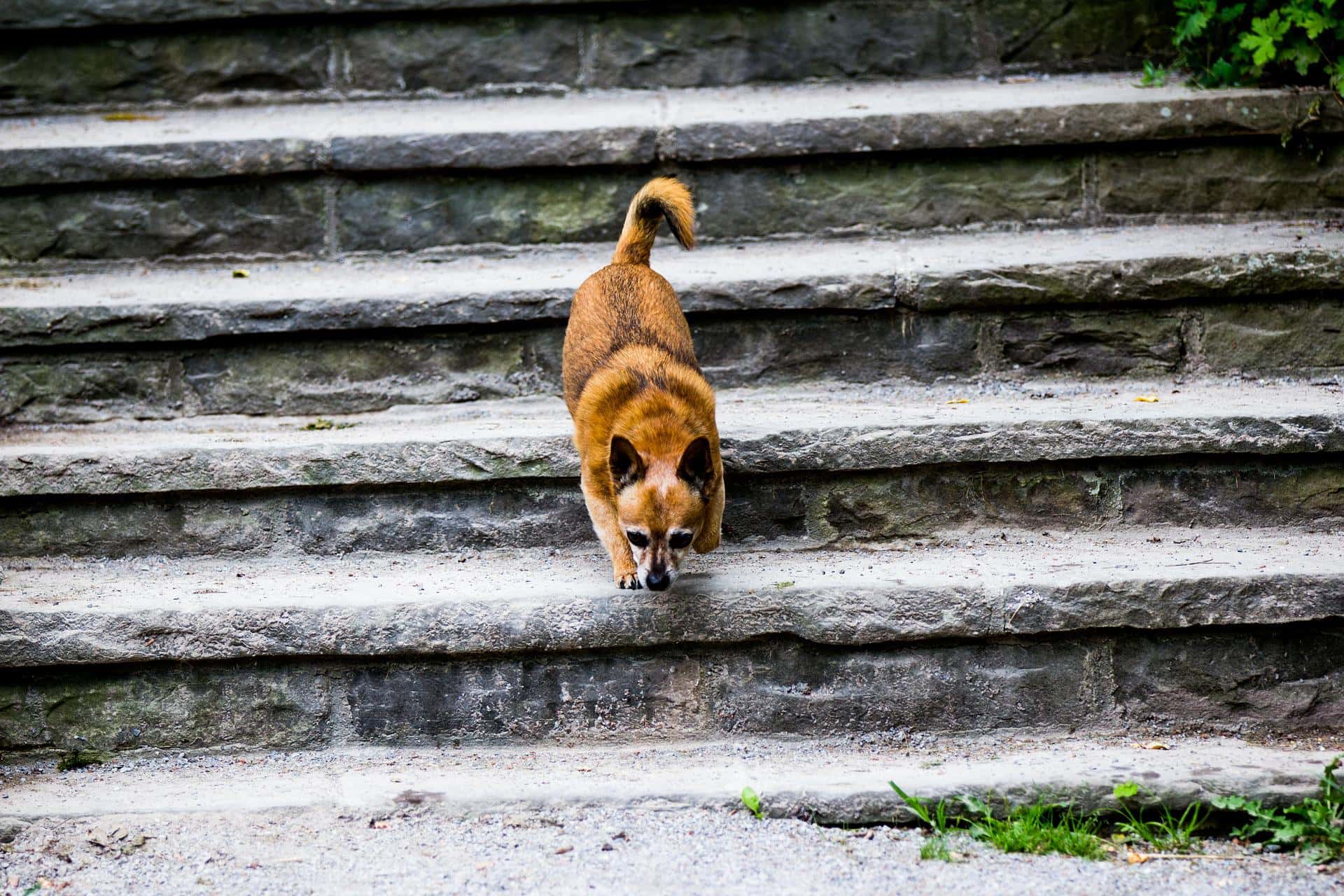Dogs can be afraid of stairs because they haven’t been exposed to them before. We usually think of puppies not knowing what stairs are, but older dogs can be just as frightened of them. If you’ve recently added an older dog to your household that has never seen stairs before, you may be wondering how you’ll get them to be comfortable using the steps in your home.
In this article, we look at five tips and tricks for getting your dog to go downstairs. While many dogs can easily master going up, going down can be scarier. Read on for more information on how to make your dog comfortable on stairs.
 Before You Begin
Before You Begin
If you have a small dog that is easy to carry, you might just pick them up and carry them up and down the stairs. While this seems like a good solution, it’s important that your dog learn to use stairs by themselves. Outside, they will encounter steps in places like dog parks, trails, dog-friendly buildings, and anywhere else you may take them. If your dog can’t navigate stairs on their own, it will limit your activities together.
If your dog seems hesitant to go down the stairs, rule out a medical condition first. Talk to your veterinarian about possible reasons that your dog can’t physically navigate stairs. If they are hesitating to go down the stairs, it’s possible that they are experiencing vision loss or impairment. Maybe they can’t see well in the dark. They could also have bone or joint issues like arthritis that make stairs painful to use. Before trying to train your dog to use stairs, make sure they are physically able to do so.
Your dog may also just have a fear of stairs, especially if they have had a traumatic experience with them before. Dogs that have fallen down the stairs and been injured may hesitate to use them in the future.

 The 5 Tips for Teaching a Dog to Go Down Stairs
The 5 Tips for Teaching a Dog to Go Down Stairs
1. Examine the Stairs
If the stairs are cluttered, your dog may be scared to attempt to navigate them. You don’t want any setbacks or things that prohibit your dog from making progress. Are the stairs carpeted or wood? If they’re slippery, your dog might have trouble getting traction, which is dangerous for both you and your dog. If people are on the stairs next to the dog and the dog falls, it could knock everyone down the stairs.
Adding traction material like anti-slip strips to the stairs might be helpful. Once your stairs are safe and clear, bring your dog to them.
2. Let Your Dog Check Out the Stairs
It’s important to remember that you don’t want to force your dog to go down the stairs. This has to be done at their own pace, or else they won’t learn to feel comfortable using stairs. As your dog is checking out the stairs or going near them, reward your dog with treats and praise. This should be a positive experience, even if your dog doesn’t take a step or make it down the staircase. Always make it positive for them so they will try again.

3. Comfort Your Dog
If your dog is scared or hesitating at the top of the stairs, try to comfort them. Sit on the step below your dog and pet them, give them treats, and talk to them in a happy voice. Then, try moving down a few steps. If your dog isn’t totally scared of the steps, they may follow you down without realizing it. If this happens, reward them with praise, affection, and treats.
4. Lure the Dog
You can try to lure your dog to follow you down the stairs with treats. Sometimes the whole staircase is too much at once, and your dog will go down a few steps and stop. If they stop and go back up the stairs, be patient and try again. It might take a while before they get the hang of it. Be sure to go slowly, and encourage your dog to take one step at a time.
5. Use a Leash
If your dog isn’t making a move to go down the stairs alone, try attaching their leash and letting them know that you are there to support them if they should fall. If they know that you are there to catch them, they may attempt to go down the stairs with less anxiety. Never use the leash to force or pull the dog downstairs.
Take it one step at a time, using treats to lure them. Place a treat on the stairs below them. Take a step down. Wait for the dog to step down and get the treat. Reward them. Place another treat two stairs below them. When they successfully reach that treat, reward them again. Eventually, they should realize that the stairs can be mastered if they just go slowly.
Other Tips to Get a Dog to Use Stairs
If your dog is large, it might be hard to place them on the staircase. You either start at the bottom or the top and work from there. However, if you can pick up your dog, you can place them on the stairs in the middle or toward the bottom of the staircase. This way, they won’t have as many stairs to navigate at once and may find reaching the floor easier than trying to start from the top. Place them a few steps away from the bottom, and see if they can figure it out. Use treats and positive praise if they do it.
You can also try to put your dog’s front paws on the stairs below them and encourage them to move their back feet on their own to walk down the stairs. Holding onto their collar may provide them the extra support that they need to feel safe trying this. Remember not to go too fast or scare your dog away from the stairs for good. Don’t force them to do something that they’re not ready for.
 Conclusion
Conclusion
Teaching your dog to go down the stairs is beneficial because they will be able to accompany you in places outside of the house. By being able to navigate stairs, they won’t be limited in the things that they can do outdoors or in other places.
It’s important to go slow and let your dog set the pace until they feel comfortable navigating stairs on their own. Use a leash to give them security as they attempt to descend the staircase. Use treats and praise when they successfully reach the bottom.
Featured Image Credit: Pixabay




 Before You Begin
Before You Begin The 5 Tips for Teaching a Dog to Go Down Stairs
The 5 Tips for Teaching a Dog to Go Down Stairs








